This page contains affiliate links. Please read our disclosure for more info.
Slovenia’s wine regions may not be well known internationally but a visit can be just as rewarding as exploring the wineries of Tuscany, and you’ll avoid the crowds. We visited the Vipava Valley just an hour’s drive south of the capital Ljubljana but it feels far away from city life. Here we discovered karst hills and vines heavy with grapes, terracotta roofed villages and gothic churches, gourmet food using local produce, and of course many excellent wines.
Our day began in Vipava, the principal town of the region, with less than 2000 inhabitants. In the main square men were drinking beer in the pavement cafes at 10am on a weekday and the town had a sleepy unhurried air. Rugged karst mountains, limestone protruding from the green-blue forest, are the backdrop to the town of simple but elegant white and pastel buildings all with terracotta roofs.
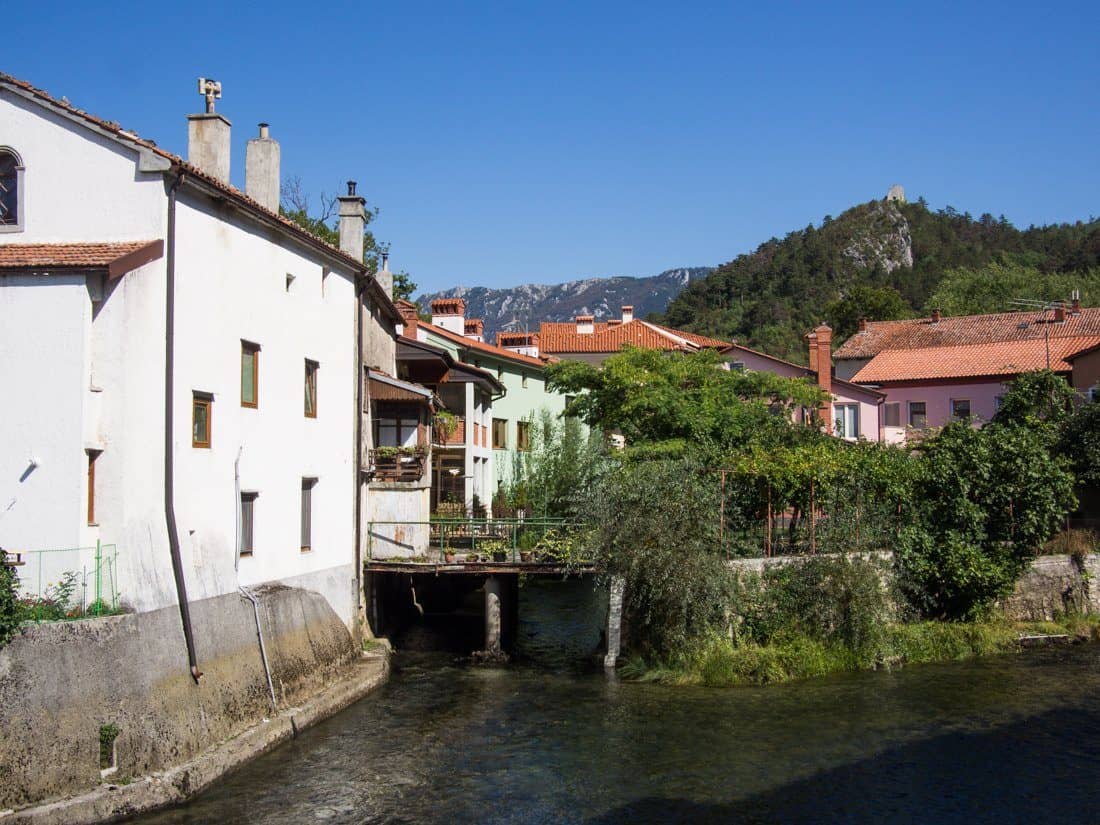
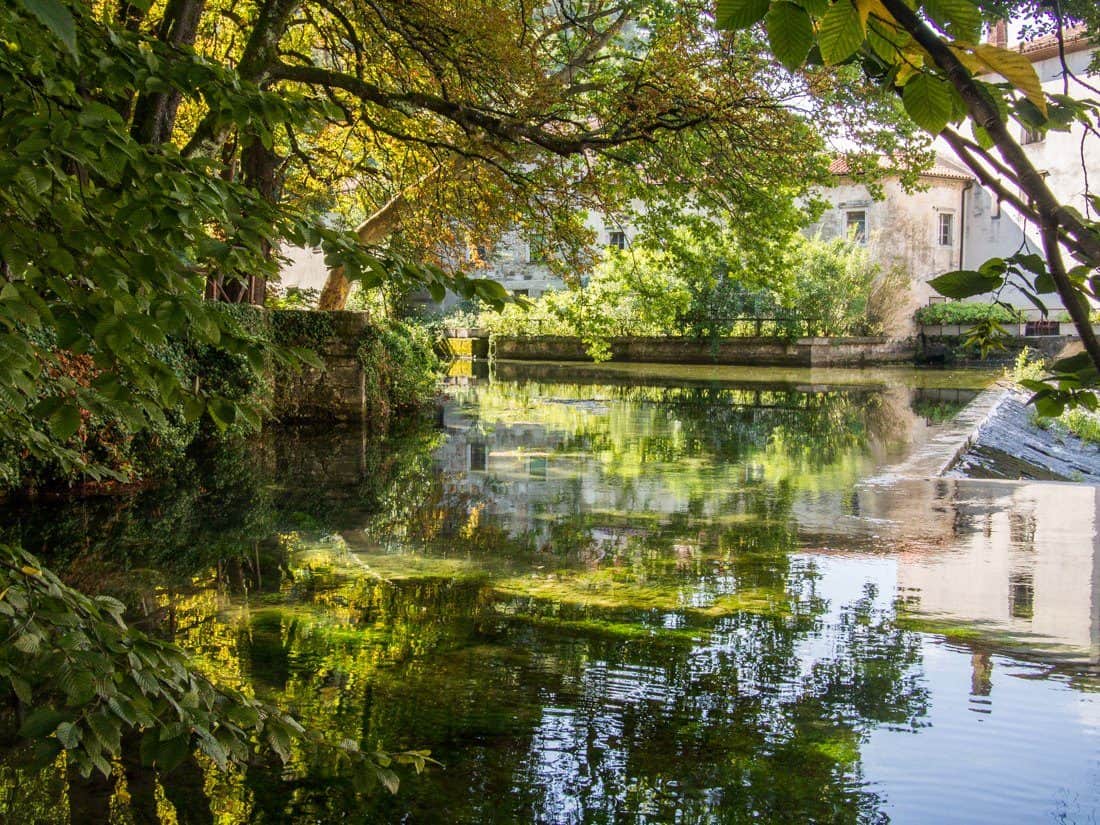
Vipava’s distinctive feature is water. It wells up from the ground all over town, producing seven springs. We walked along the tree-lined pathways next to the river, the stone houses reflected in the calm morning water, with nothing but the sound of water gushing from the springs. It was blissfully peaceful and we wondered why we’d never previously heard of Vipava.
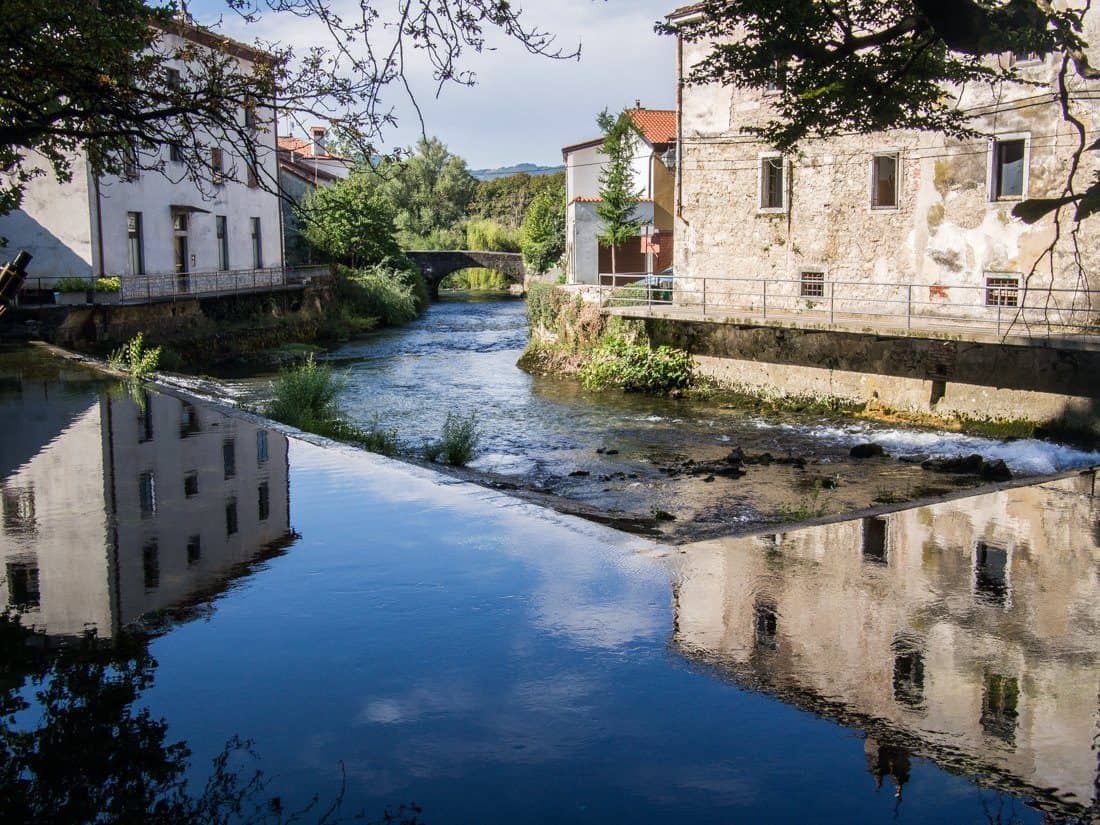
We had coffee at Gostilna Podskala, an idyllic spot with a platform over the river shaded by huge trees drooping into the water, their strong trunks bent by the powerful bora wind that menaces the region, their leaves just beginning to turn orange.
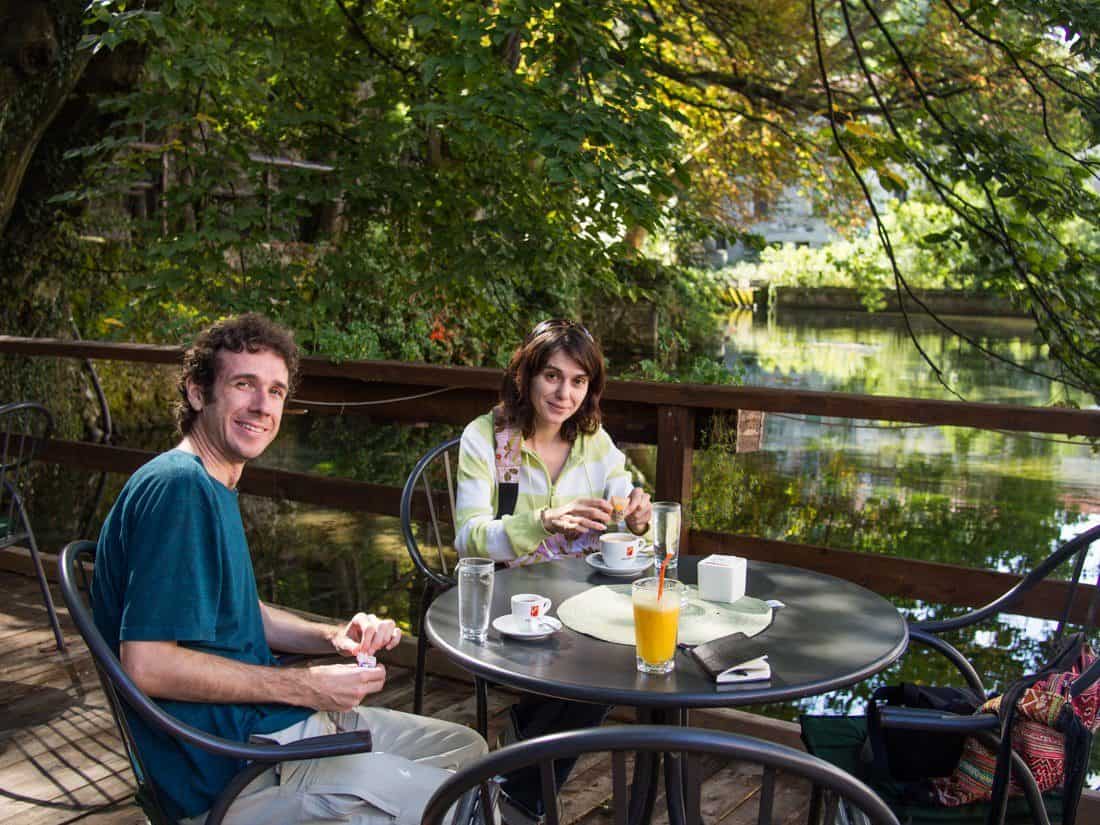
Apparently Vipava receives around 40 visitors a day, mostly to taste wine and often in tour groups, but we didn’t see any others as we wandered around the town.
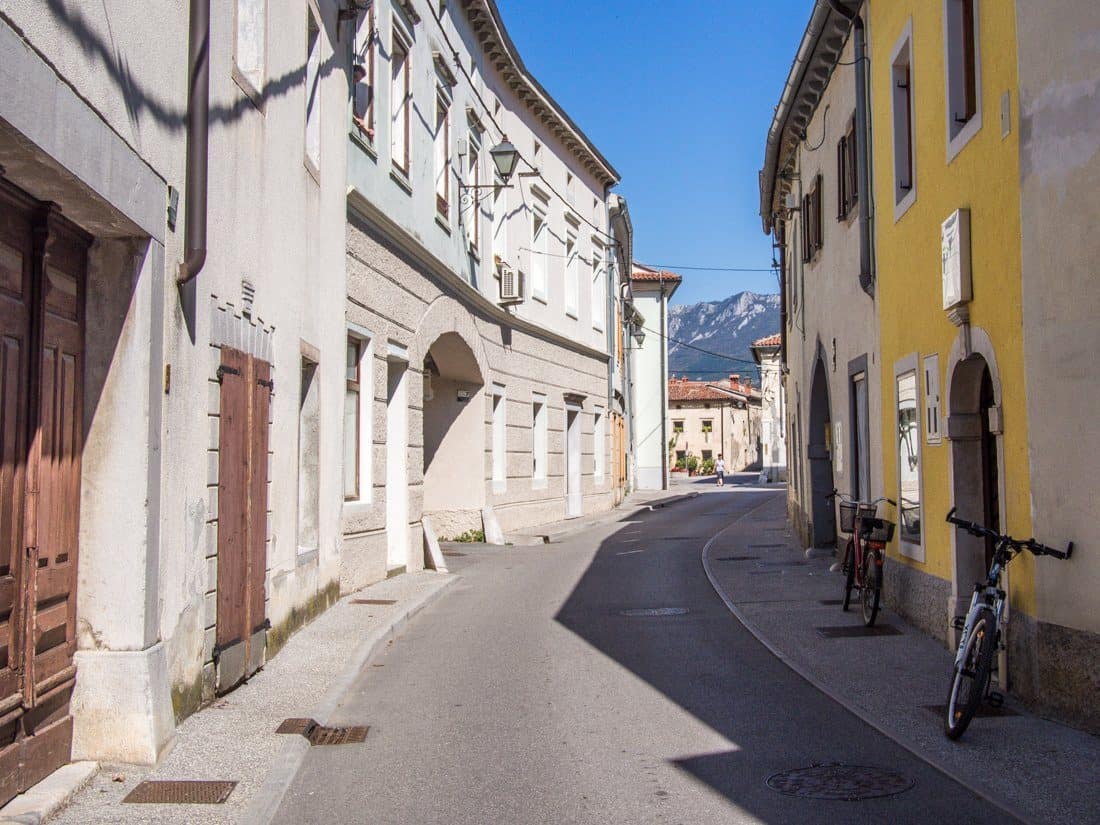
Vipava has its surprises. There are five castles, the ruins of the oldest one high up on a hill dating back to the 12th century. In the cemetery you’ll find two original Egyptian sarcophagi, brought over from Egypt by the diplomat and Egyptologist Anton Laurin. Even the park has treasures—it’s edged with 17th century stone putti and contains a fountain that’s just as old; elsewhere they could be hidden away in a museum but here they’re on display for everyone to enjoy.
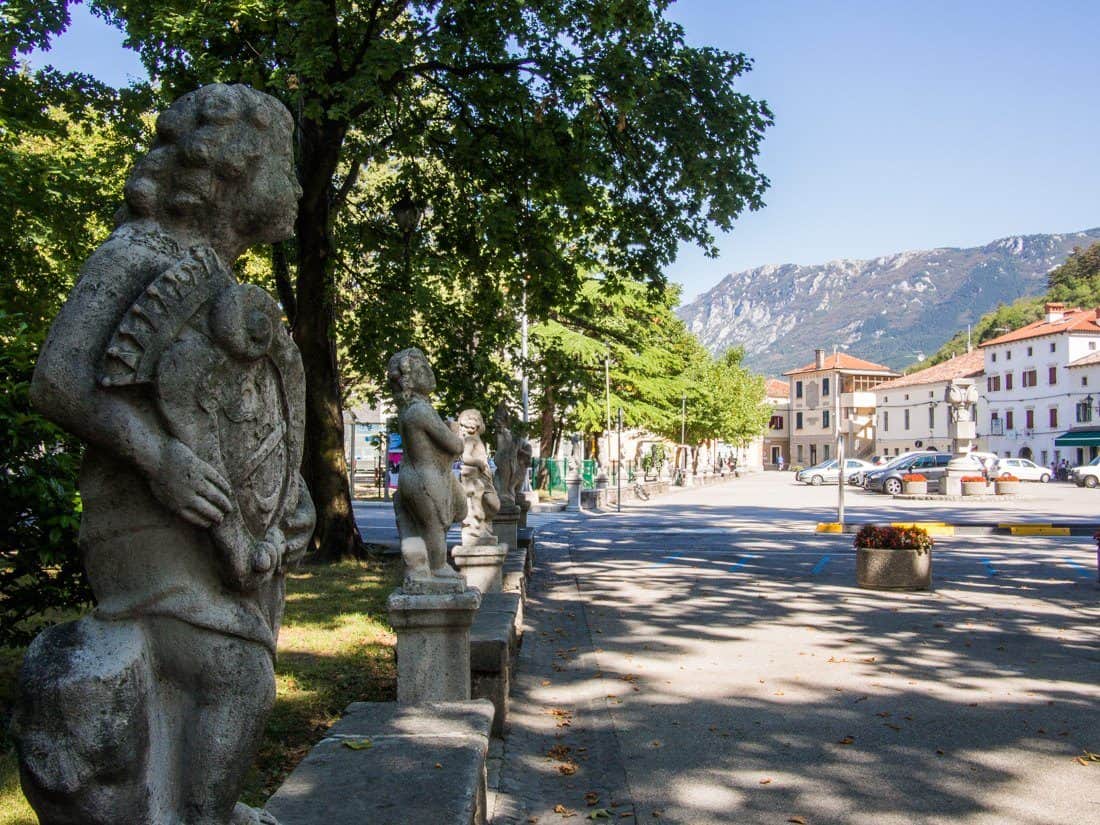
It’s a town where no one locks their cars or bikes, people greet passers-by, and almost the whole town participates in the Sunday morning ritual of church followed by gelato. As in Ljubljana it didn’t take us long to think of returning for longer, wondering how easy it would be to rent an apartment—we didn’t see any hotels.
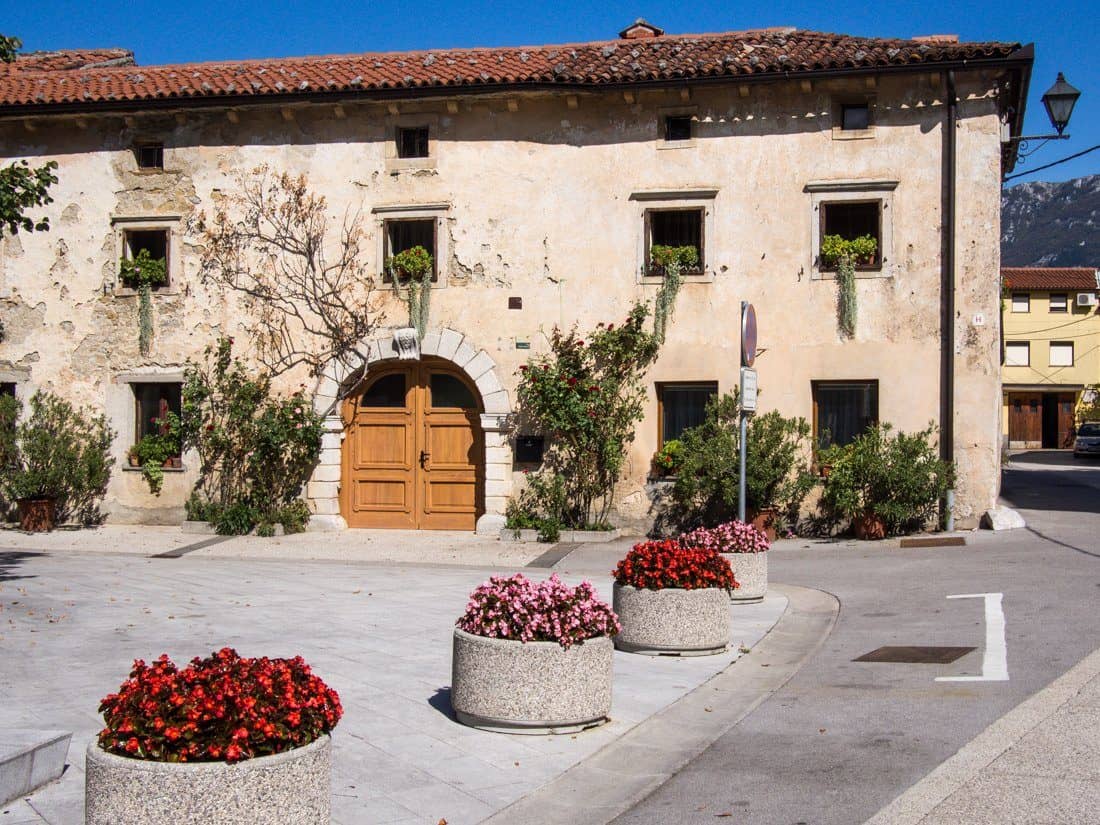
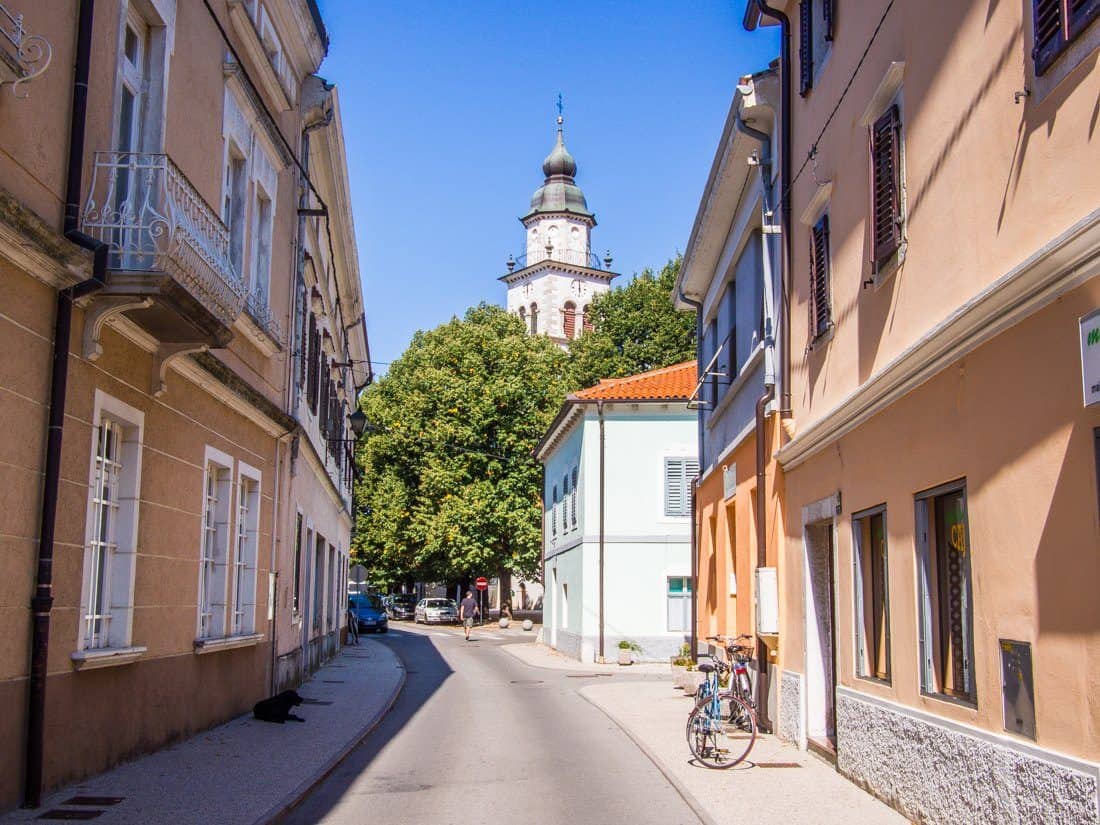
We made our our way through a network of winding lanes, vines growing outside many homes, to the top of the town. Looking down at the view, at the terracotta roofs and hilly backdrop, we could be in Tuscany, but we had the place to ourselves.
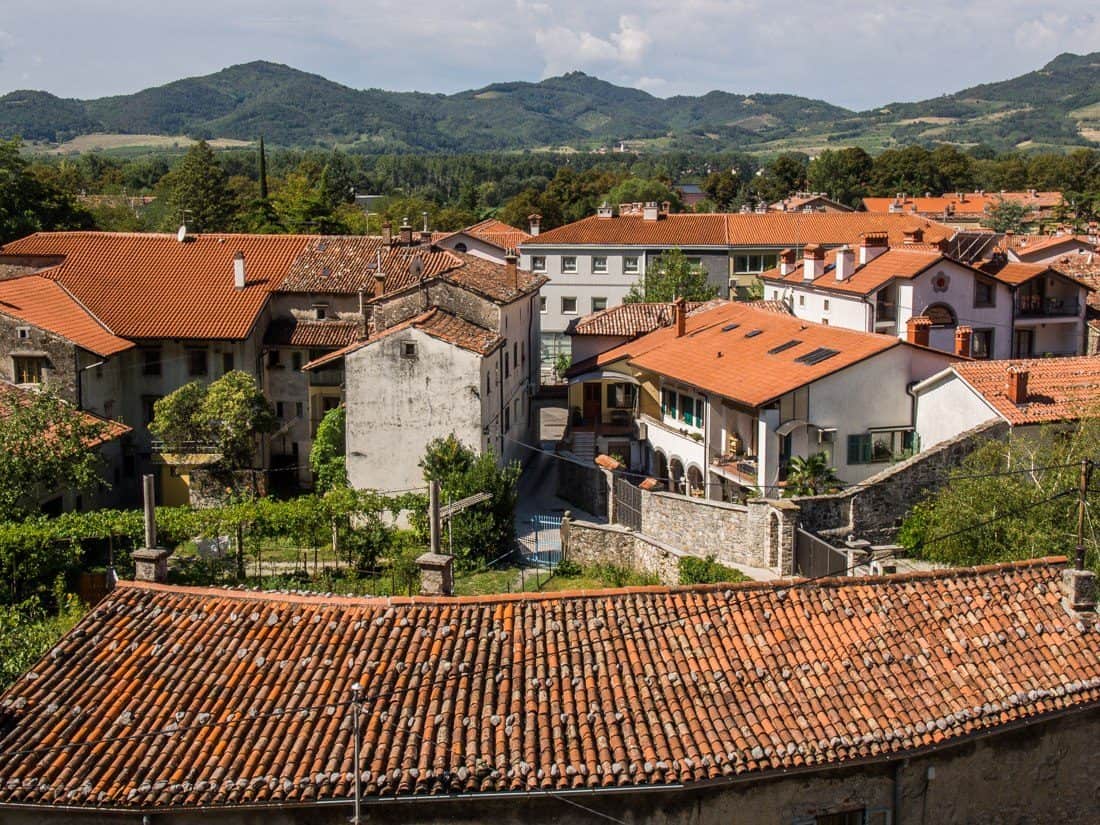
Wine Tasting
Wine has been made in the Vipava Valley since Roman times and it’s still one of Slovenia’s main wine regions. The tourist office in Vipava houses the Vinoteca wine museum. It’s a community project that offers tastings of wines from all the villages on the Vipava wine route—160 wines from 45 different wine makers. As many of the wineries in the area aren’t set up for visitors this was created as an alternative.
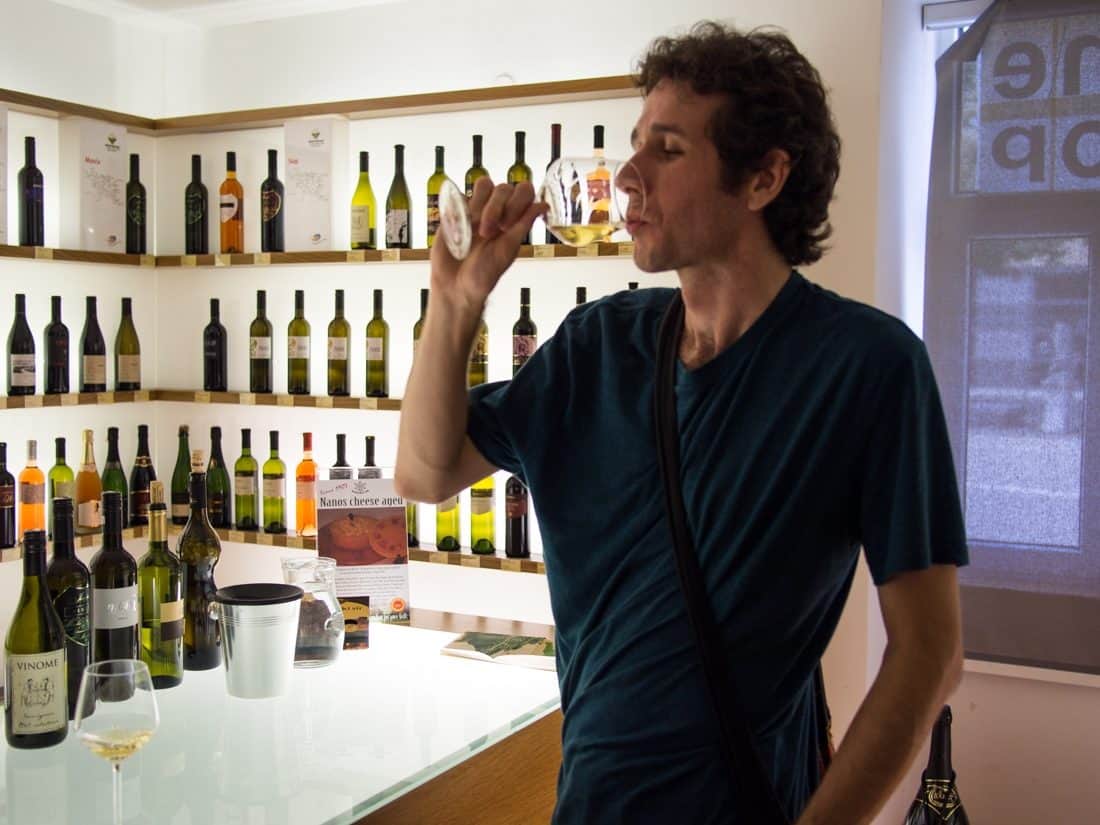
The walls of the small tasting room are lined with bottles divided up by village and tastings take place at the table in the middle. Vipava is most well known for its dry whites, especially the zelen and pinela grape varieties that are unique to the Vipava Valley. We particularly liked the fruity, refreshing pinelas.
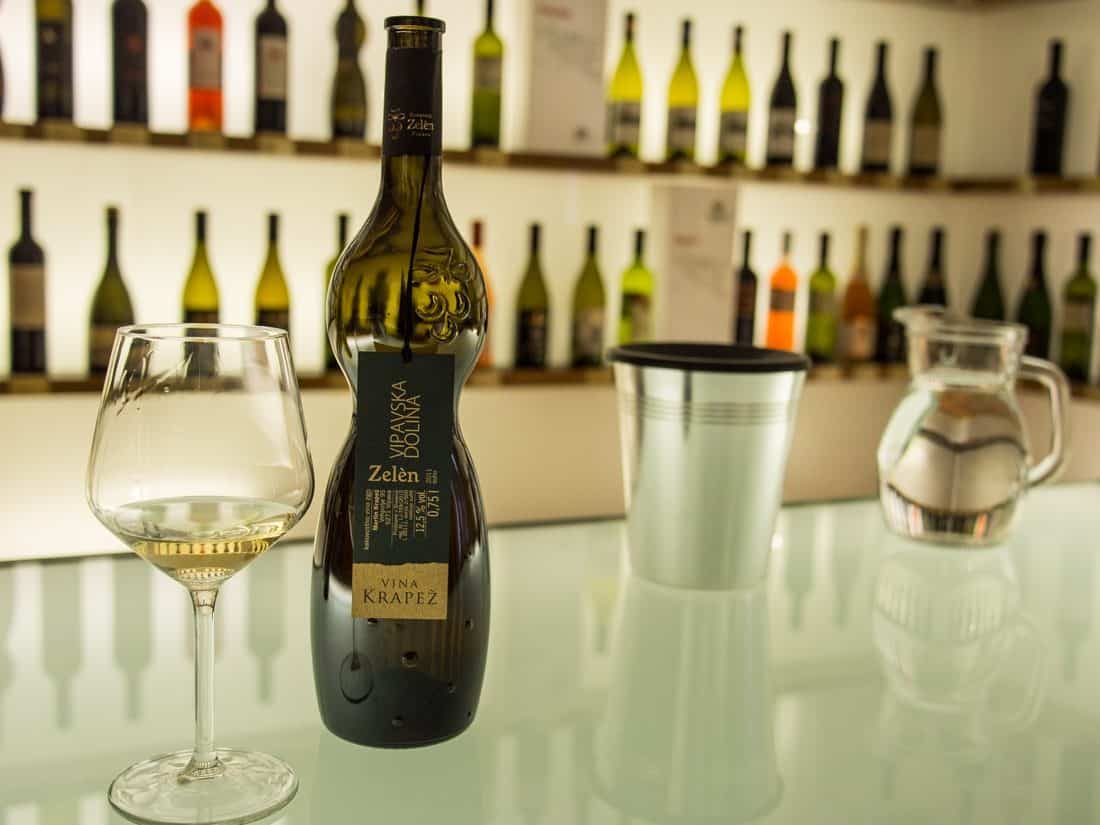
We moved on to rosés and the unusual orange wines. We had never tried orange wines before visiting Slovenia. They are made with white grapes using the method of making red wine creating a pale apricot or golden colour. People tend to love it or hate it—we enjoyed it, especially with food.
We liked the reds just as much including some pinot noir and merlots, and our favourite, a dark purple Ferjančič 2011 cabernet sauvignon. Finally our epic wine tasting ended with two aromatic semi-sweet muscat dessert wines.
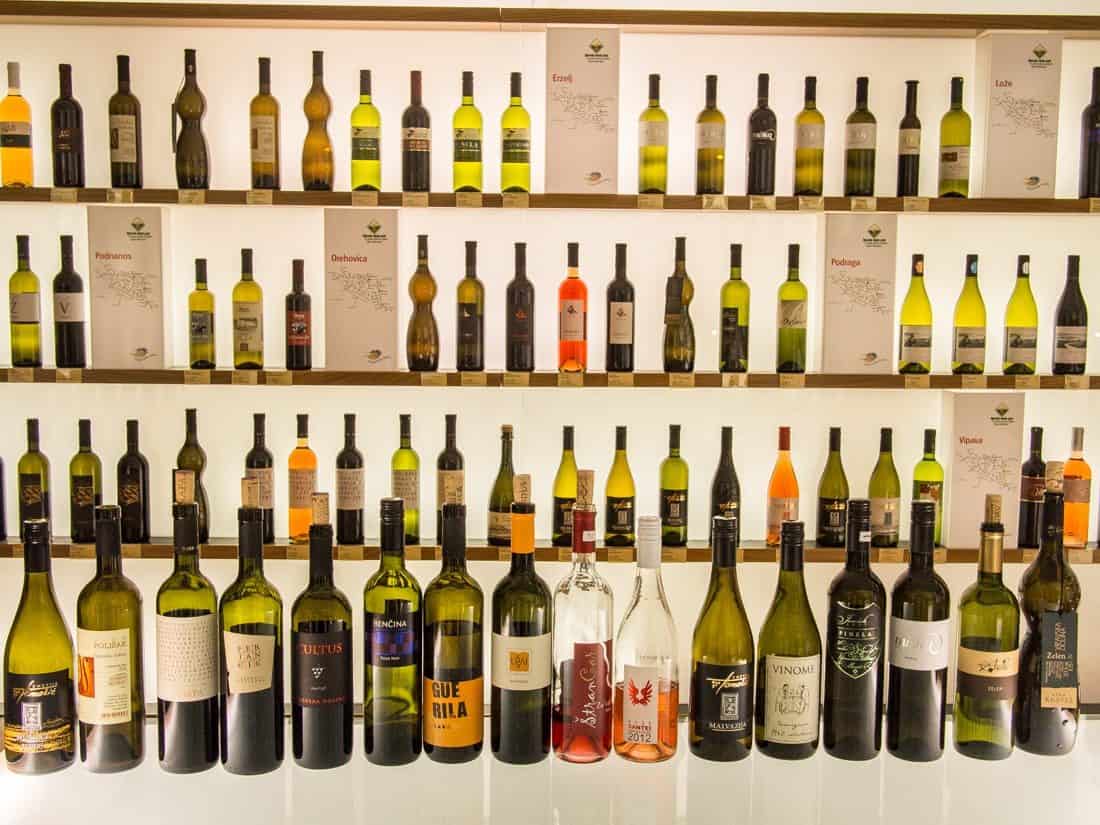
Throughout our stay in Slovenia we were surprised by how good and affordable Slovenian wine is. As most wines don’t get exported, it’s a secret that Slovenians are keeping to themselves.
Wine tastings at the Vinoteca cost €5 per person, but it’s free if you buy a bottle. Most wines were under €10, some as little as €4.50. The tourist office is the best place to arrange visits to wineries in the valley. Most people come here to taste wines first and then decide where they’d like to visit.
Our Favourite Meal in Slovenia
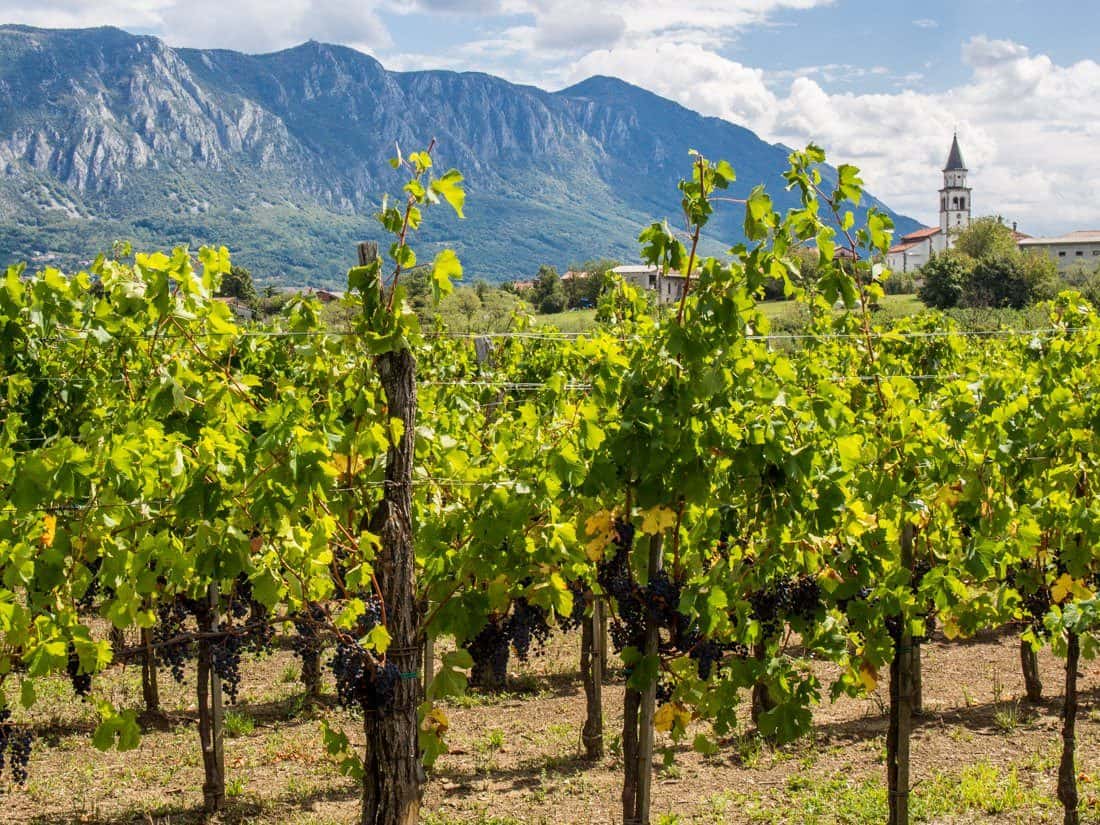
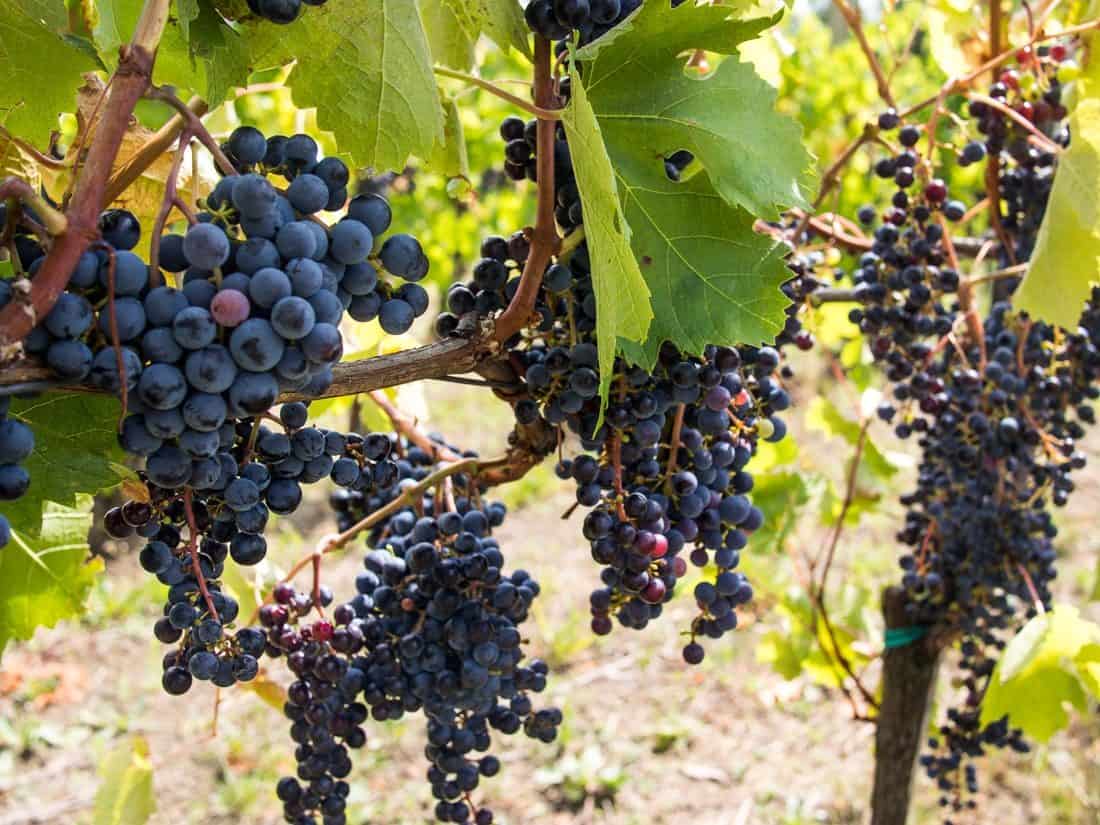
A few miles from Vipava is the tiny village of Slap and here we discovered our favourite restaurant in Slovenia. Majerija is a 300 year old farmhouse surrounded by vineyards and karst mountains with views of Slap’s church spire in the distance. Matej Tomažič and his wife Nataša restored the house and opened their restaurant in 2006 with a focus on creating traditional Slovenian cuisine with a contemporary twist using seasonal vegetables and herbs from their extensive vegetable garden. They make everything in house—bread, pasta, vinegar, jams, syrups, liquors, many of which you can buy to take home.
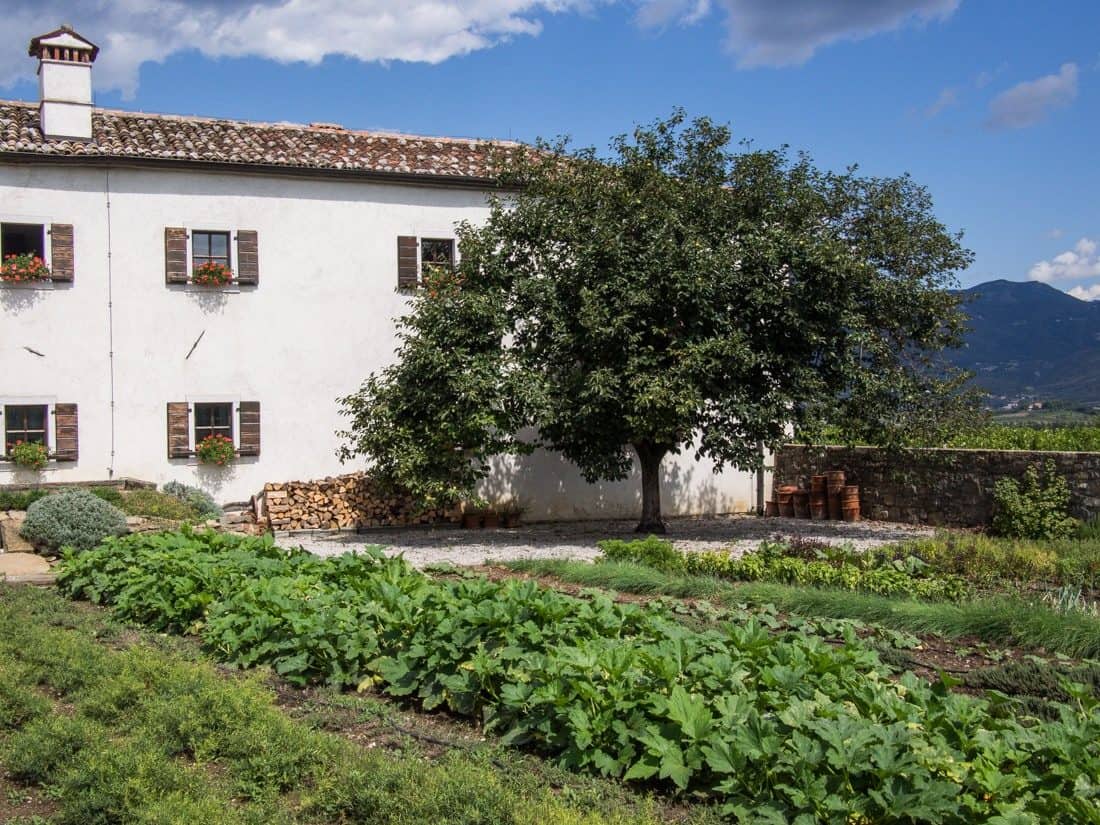
Matej has stocked the 280 year old wine cellar with 130 local wines so this is a great place to try more of Vipava’s wines. We sat outside on a sunny summer’s day for a five course tasting menu with wine pairing. The seasonal menu changes every two months and in the summer it’s Mediterranean influenced taking advantage of their homegrown vegetables.
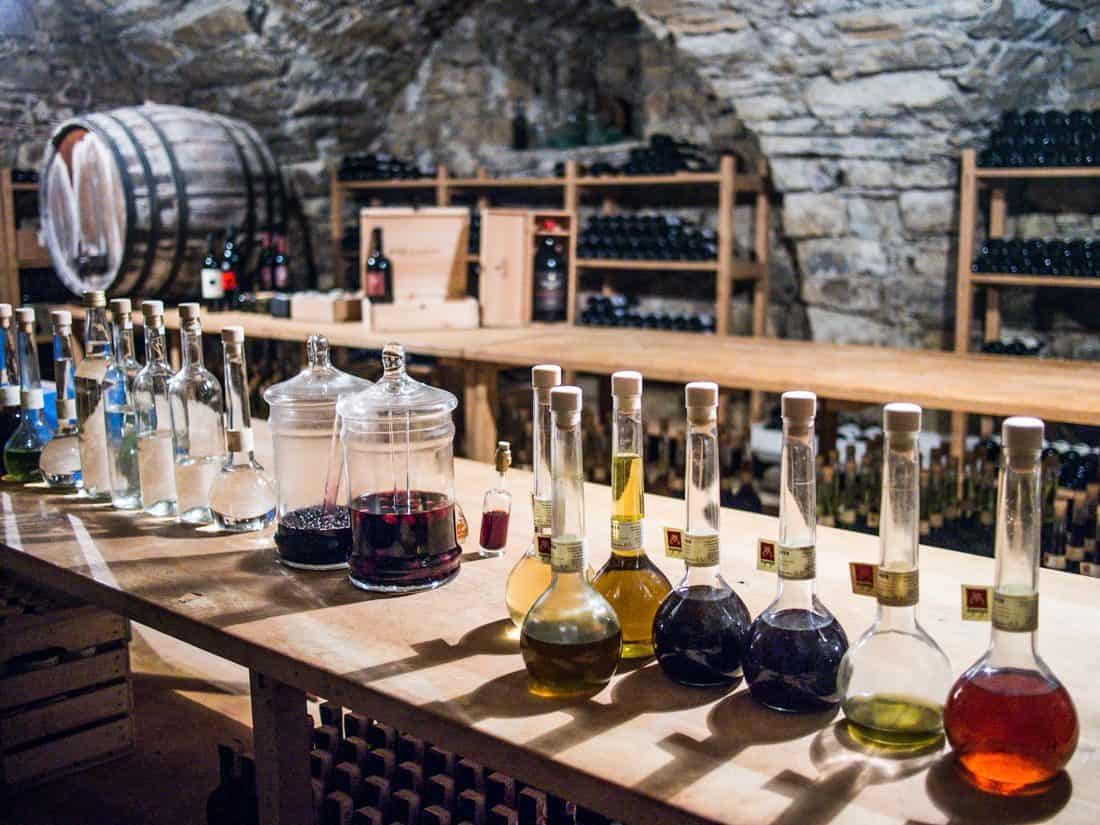
Each course was paired with an appropriate wine starting with a champagne and moving on to Vipava’s excellent whites including a Ferjančič pinela from just across the road and a no name citrusy Malvazija from Goče. The reds included an unfiltered full-bodied Sveti Martin merlot aged in an acacia barrel, and we ended with a Guerila red dessert wine. Everything complimented our food perfectly.
We started with an amuse-bouche of fried bread topped with a wonderfully creamy cheese and tomato and basil from the garden.
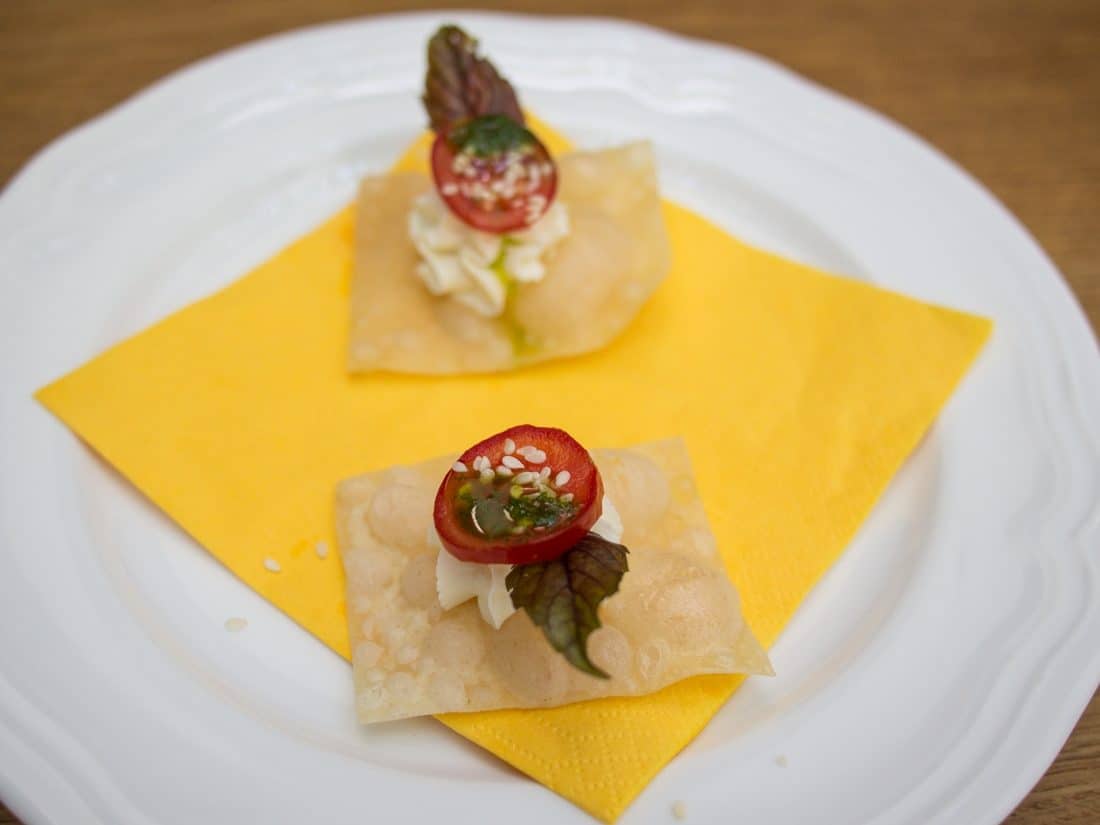
Next was a beautiful trio of stuffed vegetables—zucchini with tangy egg yolk and vinegar foam, grilled tomato with pistachio, and aubergine with a rich roast pepper cream.
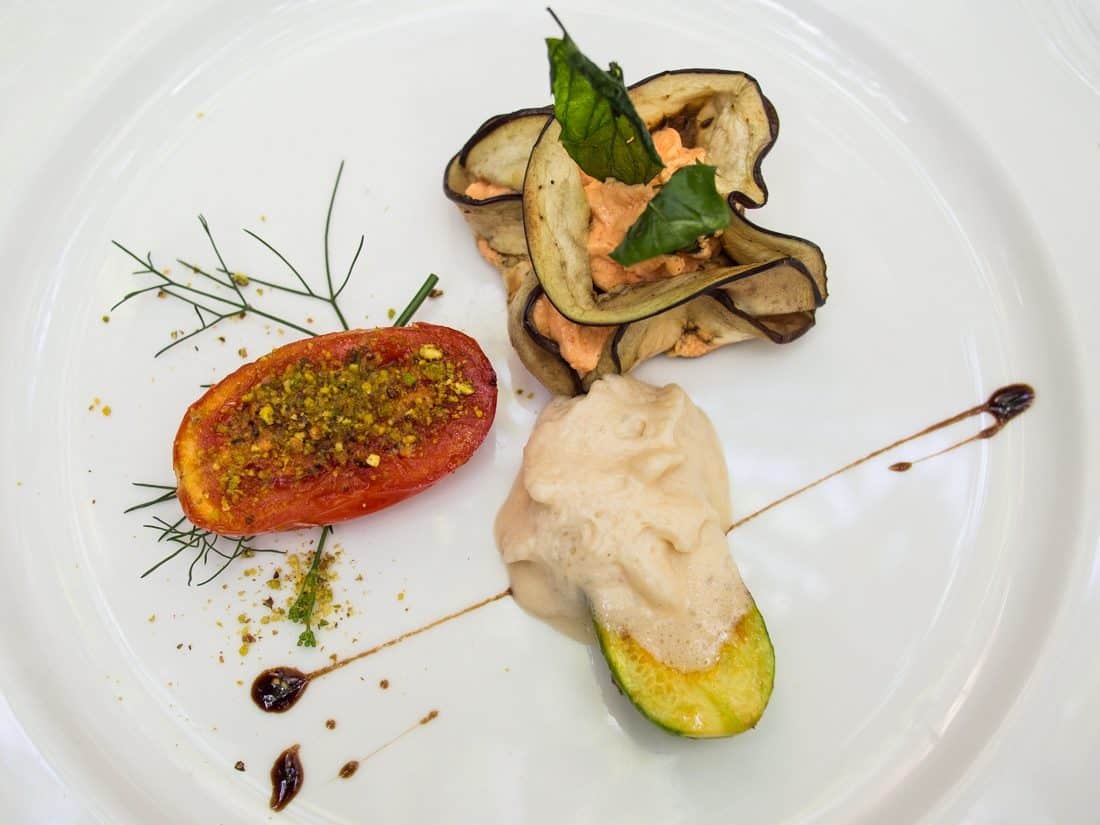
The beetroot pancake parcel showed off Matej’s distinctive use of herbs that are both beautiful and flavourful. The parcel was topped with pine nuts and thyme and served with a pesto and cheese dressing. It was soft and moist with earthy undertones but not overpowering as beetroot often can be.
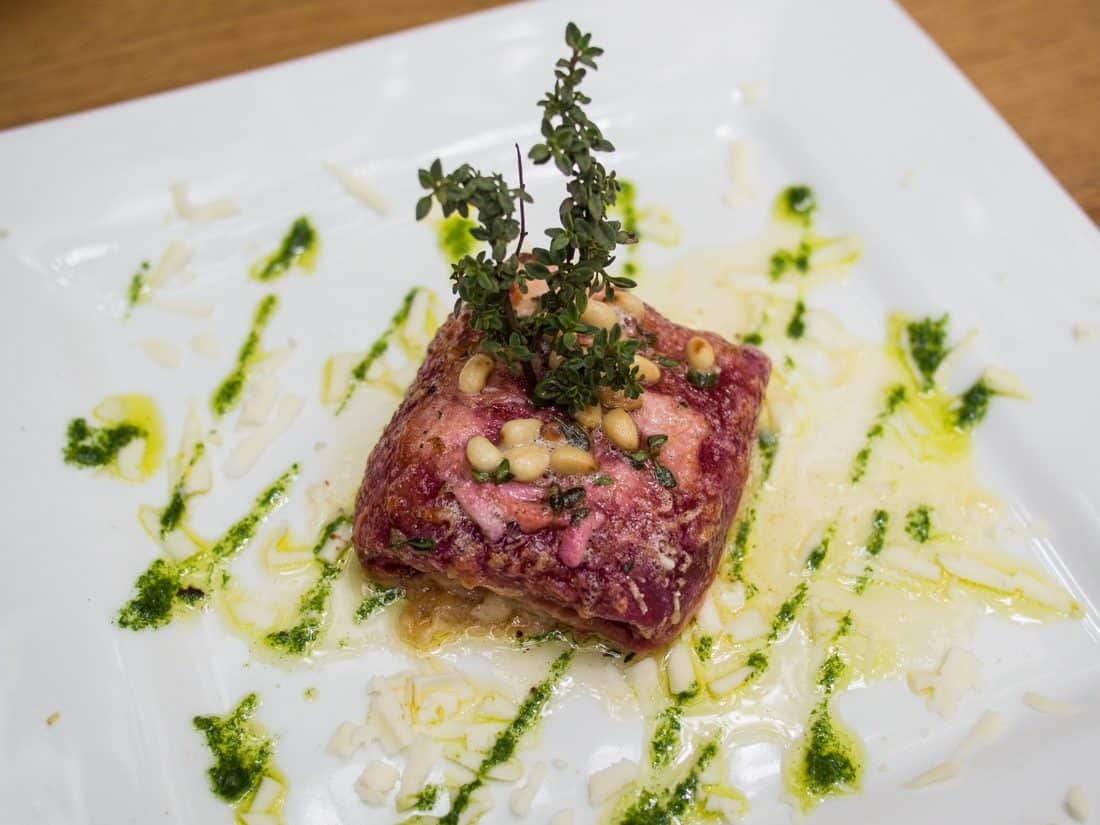
Mlinci are a type of pasta that are first baked on a hot plate until dry and then reconstituted by boiling in water for a minute. The version we ate is a house specialty and unique to the Vipava area made with a combination of different flours and served with summer vegetables and herbs. It was like a light lasagna and like everything we ate here had perfectly balanced flavours.
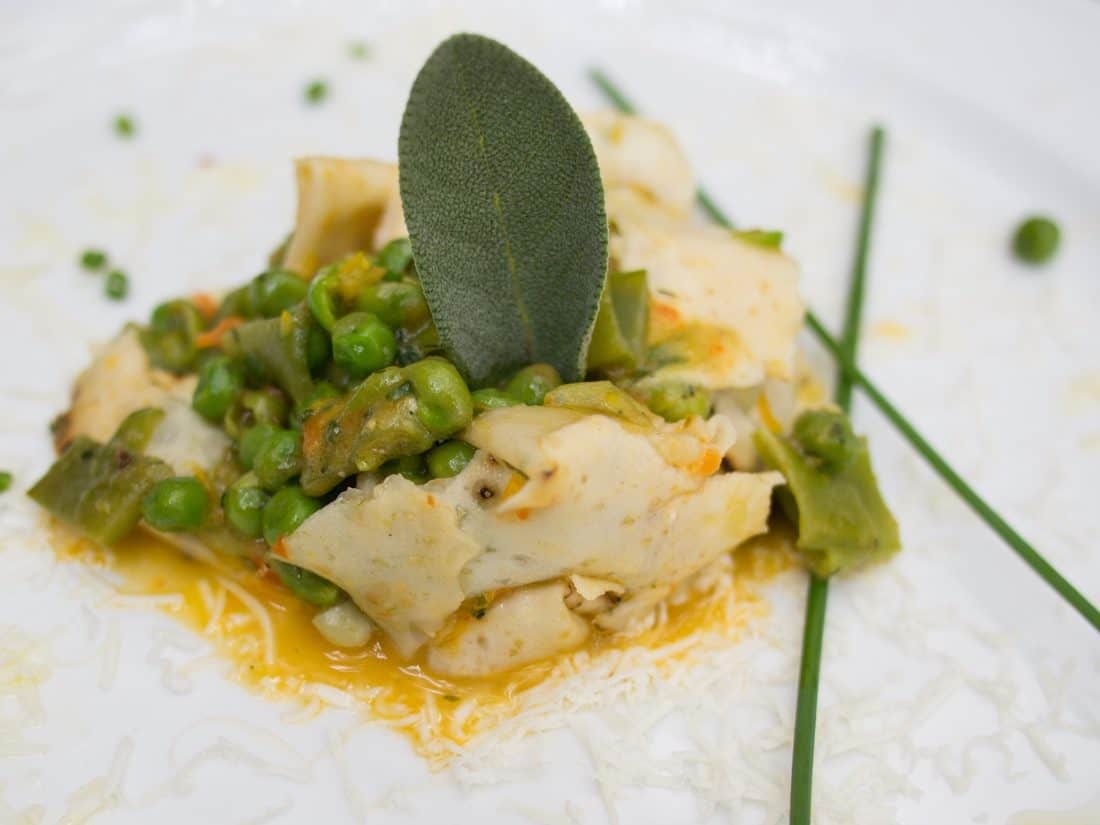
Eggplant gnocchi were served with a fresh tomato, oregano and lemon basil sauce, thyme and sage protruding from the top.
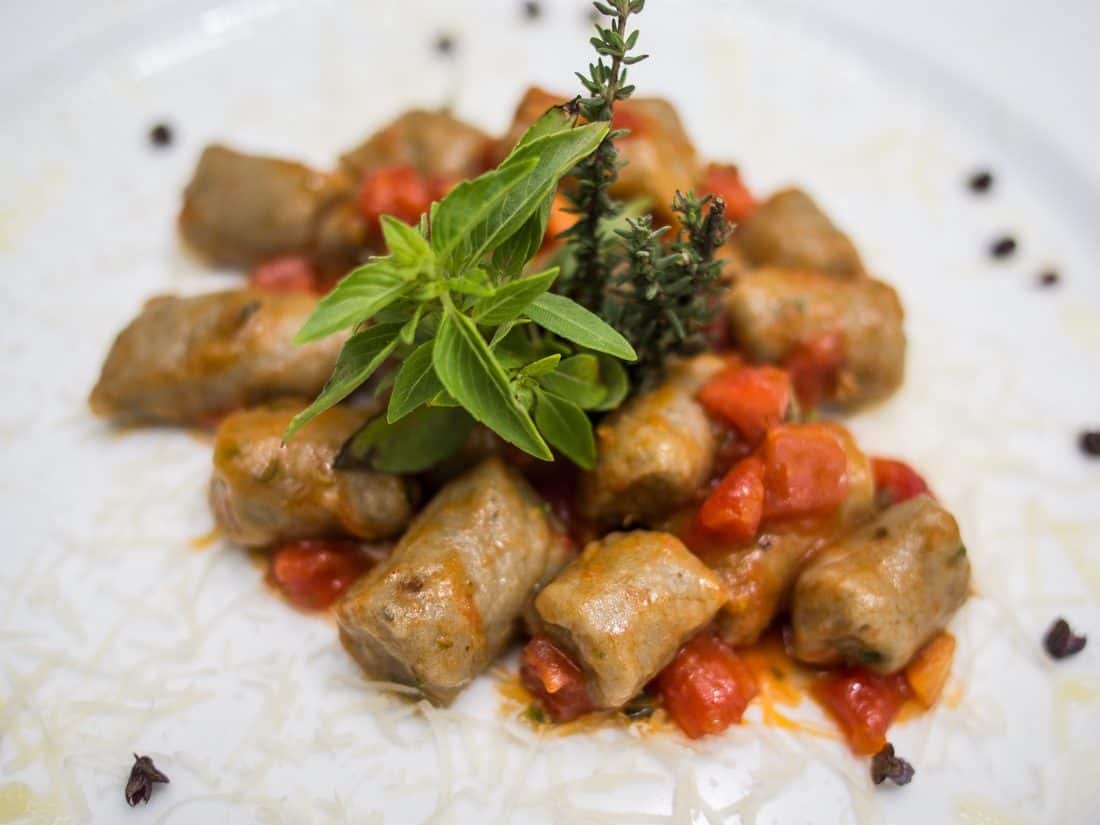
After all this we needed a light dessert and the perfect end to the meal was this elderblossom sorbet, citrusy and bursting with flavour, served with summer fruits and curd cream in a lemon wafer bowl.
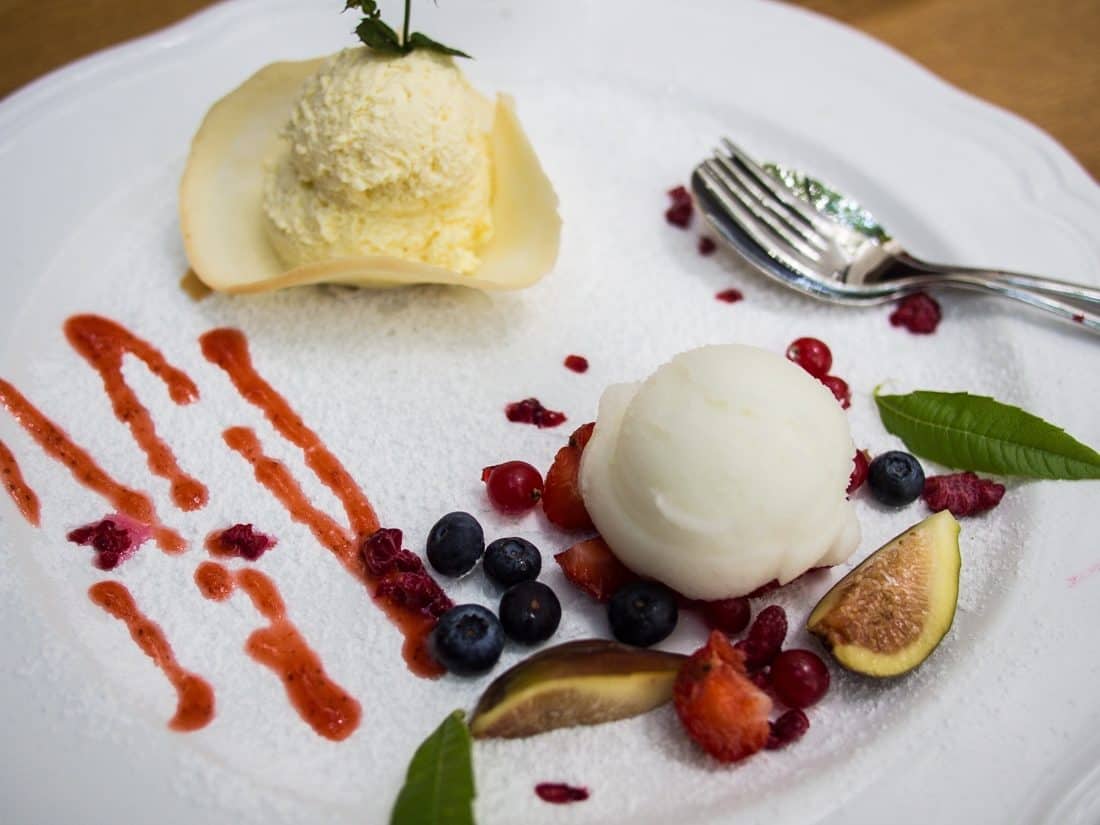
The combination of unique, beautifully presented dishes, delicious fresh vegetables from the garden, the creative use of herbs, excellent wines, and peaceful location made Majerija our favourite restaurant in Slovenia.
Majerija is very reasonably priced for this high quality. A 3 course tasting menu is €24, 4 courses are €28, and 5 courses are €32. You can also order from the menu but we’d really recommend putting yourself in Matej’s hands and getting the tasting menu with wines. Majerija is one of the most vegetarian-friendly restaurants we visited in Slovenia. All of the five warm starters in the summer were vegetarian, and Matej is happy to adapt the menu. They also offer guest rooms which would be a beautiful peaceful base to explore the Vipava Valley.
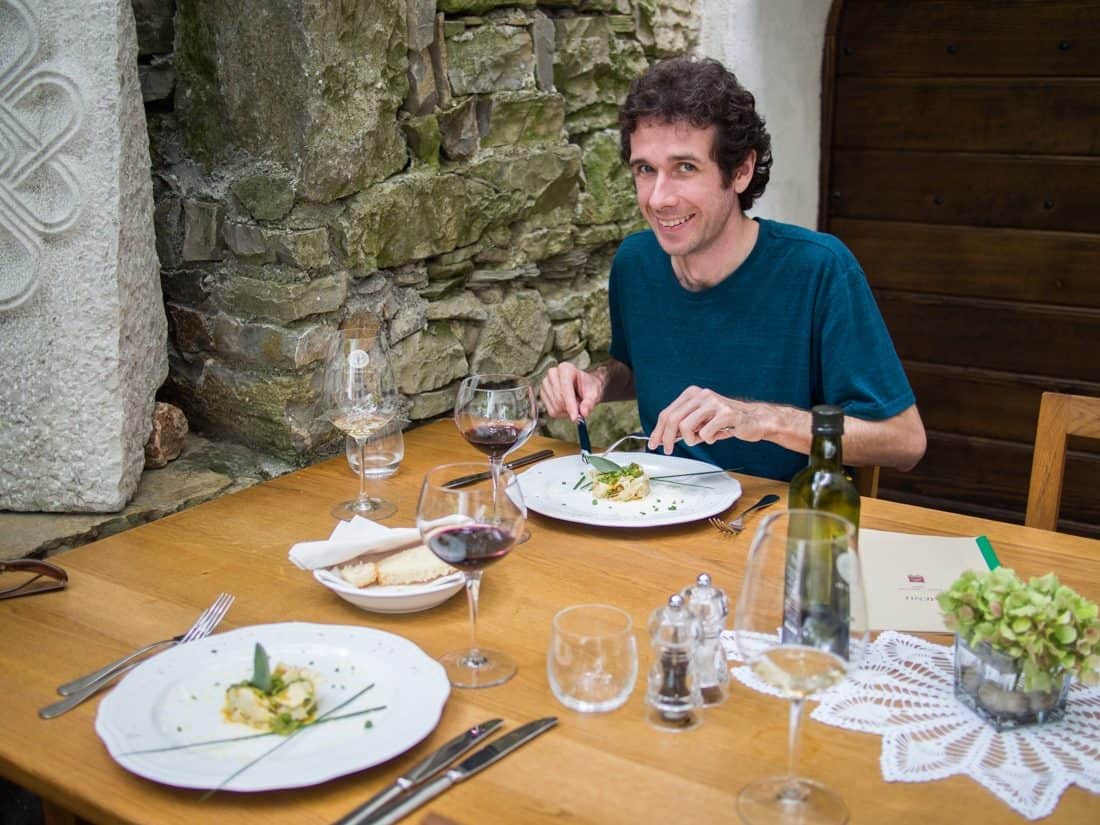
A visit to Vipava is easily combined with other attractions in the Karst region like the impressive Škocjan Caves and the Lipica Stud Farm, home of the beautiful Lipizzaner horses. We hired a car for two days from Ljubljana to visit all three. We would have loved to have spent more time in the Vipava Valley visiting wineries, wandering around the sleepy villages, and enjoying the delicious food. It’s on our ever increasing list of places to return to in Slovenia.
Thanks to Spirit Slovenia, the country’s tourist board for arranging our Vipava visit and to Matej Tomažič for creating us a truly special vegetarian meal.
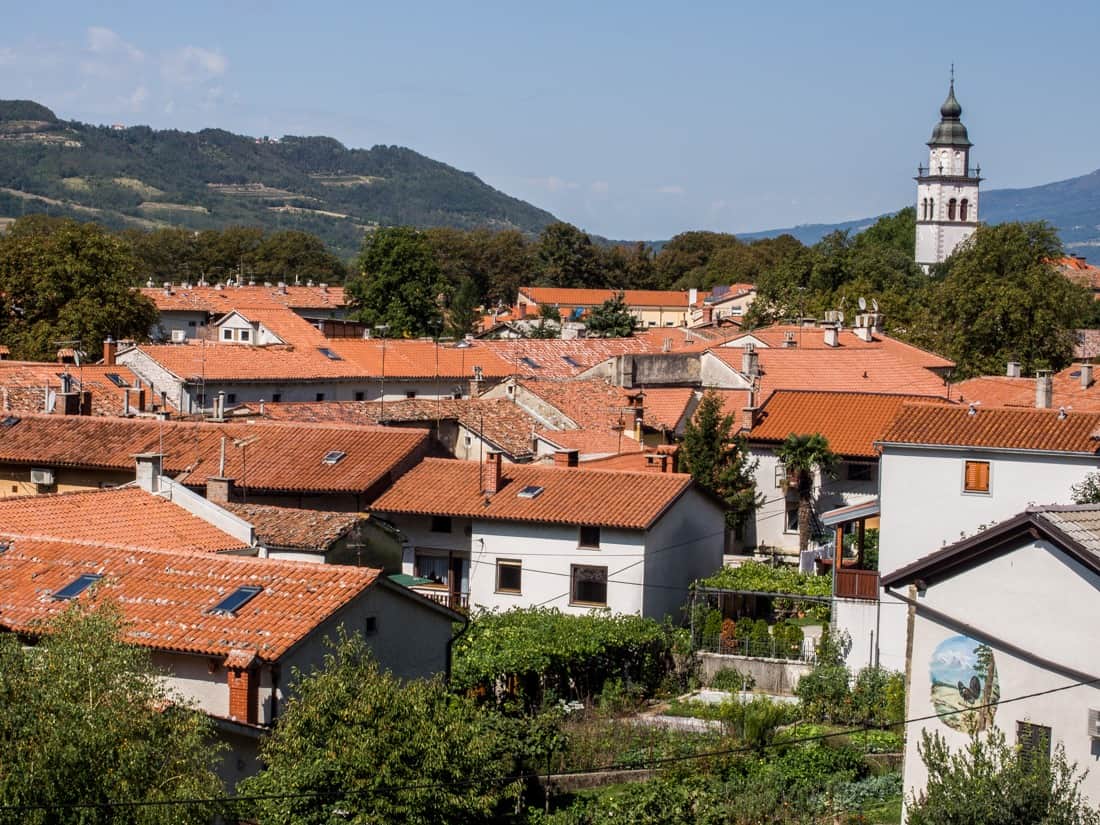
Hi! Found your blog from Gusto’s page. We loved the Umbrian region and the Sagrantino wine. We are looking at traveling to Slovenia this year. How would you say the two compare for wines etc.?
We’re not wine experts but we enjoyed the wine in Slovenia. The area is very pretty and much quieter than Italy so we do recommend visiting.
Hi, will Majerija be opened in December? My friends and i from Singapore will be in teh region in December.
I’m afraid I’m not sure. I recommend contacting them directly.
Great blog post about Vipava valley dine experience. For sure, Vipava valley has one of the finest and fresh cuisine in Slovenia. I adore wines from Vipava valley (Zelen, Pinela). As a local I can say that Majerija is one of the best choices to taste local and home-grown food in Vipava valley. Vipava valley is known as a hidden gem (still) in Slovenia where the locals are extremely hospitable and eager to share a glass of wine with foreigns. Enjoy traveling and welcome back anytime to Slovenia. Vesna
find Majerija opening hours on theirs web site from where you can send an email for more info/reservation or call them directly.
we really liked the foods on the pictures! Do you know if the restaurant is open all week? Did you find any other good restaurants if this one would be closed? We are planning a wine trip, do you know if there are winegrowers with accommodation?
Thanks!
I’m not sure of their opening hours so best to get in touch with the restaurant. The Vipava tourist board are helpful so try asking them about accommodation and other restaurants. Majerija was actually planning to open accommodation so that would be a lovely place to stay and I’m sure they could help you plan a wine trip.
Don’t tell me you were in Vipava and didn’t eat jota?
No we didn’t. We were only there for a day though and we’re vegetarian.
It is really a fantastic experience – a combination of relaxed atmosphere with rustic cuisine. Lovely!
I knew I should go to Slovenia, but now I really know! Wine country and food that is local (and from their garden? Wow!) is one of my favorite travel experiences. That food looks simply perfect.
You’d love it and definitely don’t miss Majerija -it’s a special place.
This reminds me so much of Austria, except the food looks way better (and obviously much more vegetarian friendly!): the small town no-one has heard of with weird and surprising features; the unknown wines; the movie-set like squares. Looks like Slovenia really treated you well!
Yep there’s definitely an interesting mix of Austria and Italy, but the food’s more like Italy which is a good thing for us!
Wow! place sounds great……… Thanks for sharing your experience with us.
My nice tour of Slovenia through your lens. Foods pics are making this post amazing.
Wow what a charming place! The wine and food look SO good!!!
It really was a special place—amazing food, wine, scenery, atmosphere. We’d love to go back for longer.